About Oceanic whitetip sharks
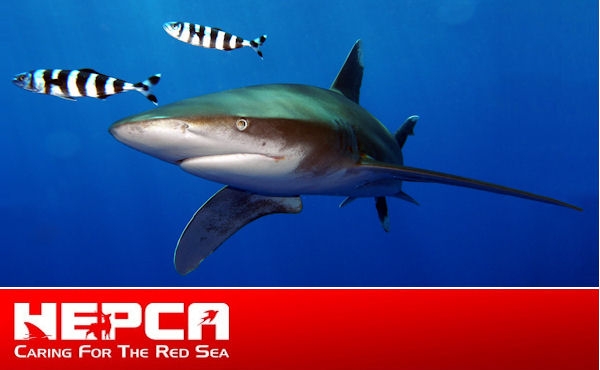
The Oceanic Whitetip Shark
(Carcharhinus Longimanus)
Facts about the local population in the Egyptian Red Sea
Sightings of oceanic whitetip sharks at certain dive sites in the Central & Southern Egyptian Red Sea became a common occurrence in the late 1990s/early 2000s. Found off-shore in tropical and subtropical seas around the globe, they are normally cruising the upper layers of their open-ocean habitat in search of food.
They are easily recognisable sharks, with their broad, large, rounded first dorsal fin, wing-like pectoral fins, and conspicuous colour markings on practically all fins (see fig. 1). These markings do not only identify them on the species level, they also allow for easy identification of individuals.
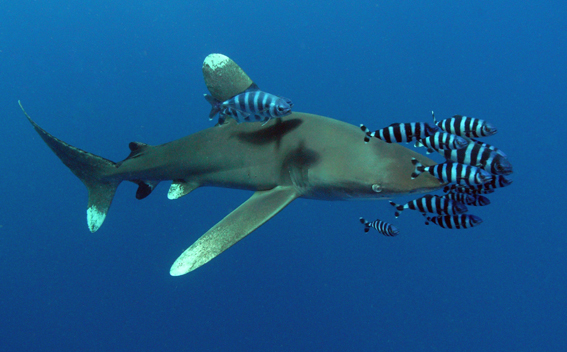
Fig 1: The oceanic whitetip shark (Carcharhinus longimanus)
In October 2004 a photo-identification study of oceanic whitetip sharks was initiated that continues until today (see www.longimanus.info).
Collecting underwater images of these sharks led to a species catalogue containing the individual markings as well as sighting histories of close to 550 identified oceanic whitetip sharks to date.
Taking a closer look at these documeted sightings, certain residency and movement patterns have emerged over the last 6 years. The hotspots for oceanic whitetip sightings have been Daedalus Reef, Brother Islands and Elphinstone, with clearly fewer sightings reported from St Johns, Fury Shoals, and South Sinai. Aside from the occasional encounter in spring and summer, the clear majority of these sharks are seen from late September to early December. Most of the oceanics approaching dive sites, dive boats and humans are ranging from ~1.5 m to ~ 2.2 m total length.
On occasion, individuals have become residents of a certain site or area for months at a time, but a more typical pattern is a short stay during one season with a 15-40% chance of resighting in following years.
Single individuals are seen over several years on a regular basis, proving the suitability of the natural markings used for this research (see example in figure 2).

Fig. 2: Underwater images of the dorsal fin (right side) of individual 506, an adult female oceanic whitetip, from 2004 – 2010. The reef where the respective picture was taken is given underneath the information on month and year (© longimanus-project).
Very few animals reaching (or even almost reaching) the reported maximum size for the Red Sea (2.5 – 3 m) have been documeted throughout the last 6 years. A total of eleven individuals were identified from the species catalogue before November 2010. Table 1 gives details on where and when these large sharks were photographed.
Table 1: List of the larger oceanic whitetip sharks documeted on photographs collected since October 2004.

Figure 3 shows the different body proportions identifying these large specimens, even without accurate measurements being available.
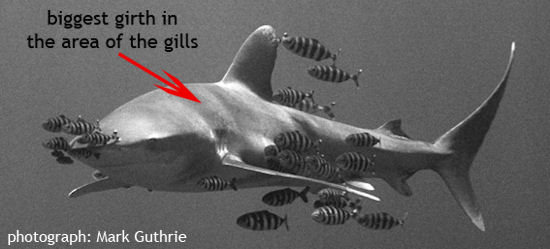
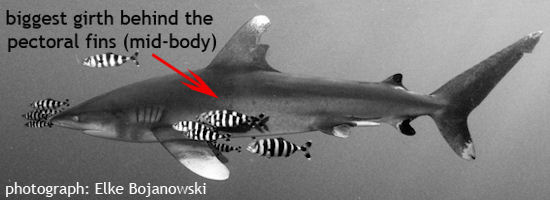
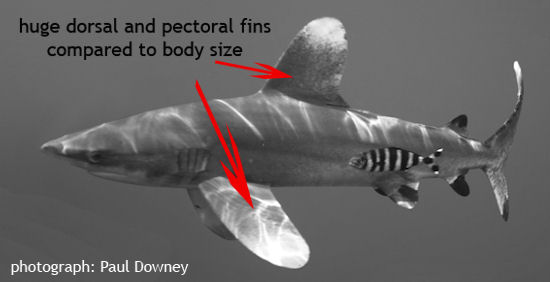
Fig. 3: Proportion of different oceanic whitetip sharks from the Egyptian Red Sea. Top: juvenile, middle: slender adult, and bottom: large adult.
Behaviour towards humans:
The Egyptian Red Sea is THE place worldwide to observe oceanic whitetip sharks underwater. Unlike some of the other shark species in the area, which are easily intimidated by human presence, they are self-confident and inquisitive. This notorious boldness – often wrongly interpreted as aggression – results in close and memorable encounters for thousands of divers every year.
Throughout the last 6 years a few incidents of oceanic whitetips biting humans in the water were reported from the Central & Southern Egyptian Red Sea. Most of these cases could be linked to illegal feeding and/or baiting activity from liveaboards and all of them involved snorkelers.
No serious incidents with divers have been reported.
Baiting and feeding predators can cause changes in their behaviour. As a consequence, interactions with them might become more unpredictable and potentially dangerous.
Guidelines for diving with sharks in the Red Sea:
Remember, you are entering the realm of highly evolved and perfectly adapted open-ocean predators, who should be treated with respect and caution. While the risks in diving with sharks are minimal, following certain behavioural rules helps to avoid potentially stressful or even dangerous situations.
Feeding and baiting sharks is illegal across the Egyptian Red Sea! Do not enter the water if there is any sign of this kind of activity in the vicinity.
Only enter the water if you are comfortable with the situation and confident that you can stay calm.
Avoid any quick, jerky or erratic movements.
Be aware that you are most vulnerable on the surface. So descend promptly after entering the water and watch your buoyancy throughout the dive.
Try to avoid quick ascents, especially with a shark right below you.
If you want (or need) to leave the water, do so in a calm and orderly fashion.
Most shark species that are inquisitive enough for close approaches are found in open water, not along the reef. Staying next or retreating to the reef should help avoid a close encounter. If conditions allow it, surface next to the reef and wait to be picked up by zodiac.
Do not try to touch or in any way harass any shark. This includes not closing off an escape route for sharks you find underneath overhangs, in caves or crevices in the reef wall.
Do not be alarmed by a shark calmly circling you; just make sure you turn with it and keep it in sight
Stay alert and look around you from time to time to see if another shark is approaching you from behind/underneath/above. As predators, sneaking up on unknown objects is part of their natural behaviour.
Generally, sharks are more reluctant to closely approach groups of divers than single ones.
Scientific Outlook:
The Oceanic Whitetip Shark is the only Red Sea shark species, for which any kind of scientific data is available. Using the presence of divers and the widespread use of underwater digital cameras, the collection of underwater images has proven to be a useful tool for the study of these ocean-going predators.
These efforts to collect photographs and videos will be intensified, reaching out to visitors to the Red Sea and encouraging them to make their footage available to the study.
Additionally HEPCA is funding a pilot tracking project fitting oceanic whitetip sharks with satellite tags. These tags will hopefully provide introductory information unavailable from purely photo-ID based studies, such as dive profils and geolocation tracks. Subject to future funding, a more extensive study will be conducted, focussing on identifying critical habitats of the species, e.g. reproductive areas and nursery grounds.
To address the lack of data available for other Red Sea shark species, a monitoring program is planned involving diving professionals as qualified volunteers. Further details on these projects are available at www.hepca.com/longimanus-red-sea-shark-id.aspx.
Facts about the Sharm El Sheikh incidents November / December 2010:
Between Tuesday, November 30th, 2010, and Sunday, December 5th, 2010, five swimmers were attacked by shark(s) off the South Sinai Coast, between North of Naama Bay and Ras Nasrani.
The first two victims, two Russian woman, were attacked in short succession in the early afternoon on Tuesday while swimming off the beach. Both suffered multiple bites resulting in serious injuries. Minutes before one of these attacks, divers photographed a large adult female oceanic whitetip shark and observed it approaching one of the swimmers on the surface.
The following day, two men (one Russian, one Ukrainian) were attacked – again in short succession close to the beach around midday – a few kilometres north of the area of the first attacks. One of the victims was bitten once resulting in minor injuries, the other again suffered multiple bites and serious injuries. No video or photograph has been available of this attack or the involved shark.
As a consequence, all diving, snorkeling and other watersports activities were suspended in the Sharm El Sheikh area, with the exception of Ras Mohamed National Park.
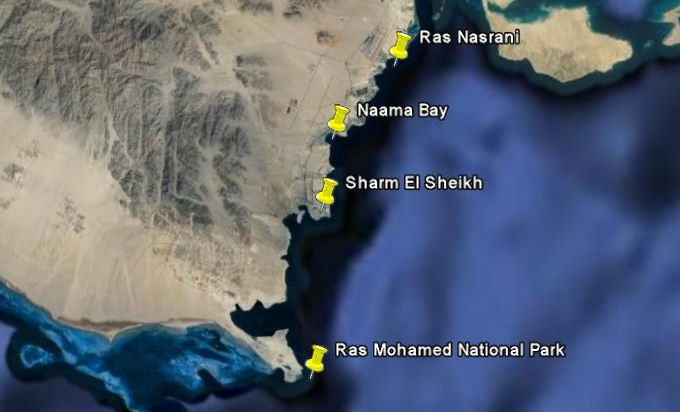
Fig.4: Satelite map of the Southern tip of the Sinai Peninsula (© Google Earth)
By Thursday afternoon/night, pictures of two captured (and killed) sharks were published by officials, showing one male shortfin mako shark (Isurus oxyrinchus) and one female oceanic whitetip shark. Comparing their natural markings and body proportions, it could be concluded immediately, that the caught oceanic was not the same large female that was photographed at the site of the first attacks.
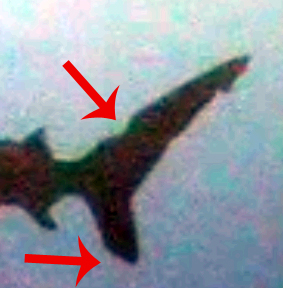
Fig.5 : Characteristical markings of female oceanic whitetip believed to be responsible for at least some of the attacks in South Sinai.
This large female was observed and filmed by divers in Ras Za’atar (Ras Mohamed National Park) on Friday, December 3rd, 2010, around midday. It showed the typical inquisitive behaviour of this shark species; no aggression was reported.
The information, that the shark implicated in the first 2 attacks was seen in Ras Mohamed was made available to officials immediately.
On that same day, exploratory dives had been carried out by dive professionals along the Sharm El Sheikh coast without encountering any other sharks.
All restrictions on water-activities were lifted and the beaches re-opened on the morning of Saturday, December 4th, 2010.
On Sunday, December 5th, 2010, around midday, a German swimmer was attacked by a shark in Garden Bay. She died on site due to the severity of her injuries. A picture taken on the surface during the attack shows the same large female oceanic whitetip shark that had been observed during Tuesday’s attacks, and interacting with divers in Ras Za’atar on Friday. Again, individual markings were used to verify her identity.
All beaches were immediately closed again, and at the time of writing, only dive professionals and experienced divers have been allowed in the water, with further restrictions in place in the area of the attacks. These divers have been asked to report back any shark activity in the area.
On Tuesday, December 7th, 2010, around midday, underwater photographs taken in Ras Mohamed by some of these divers again show the large adult female oceanic whitetip shark (from Tuesday, Friday & Sunday) interacting with divers at Yolanda/Shark Reef.
Conclusion:
A single large female oceanic whitetip shark has been observed at the site of 3 attacks on swimmers off Sharm El Sheikh, with eye-witness reports available for two. She is still in the general area, and – for the last 8 days – followed a pattern of traveling between the area of the attacks North of Naama Bay to Ras Mohamed National Park and back within 2-3 days.
The severity of the attacks and the amount of human tissue taken (and potentially swallowed) indicates a clear deviation of the normal behaviour of an oceanic whitetip shark. Instead of briefly grabbing for testing or tasting purposes, this female apparently considers human swimmers as a potential food source.
Hurghada, December 8th 2010












Kommentare